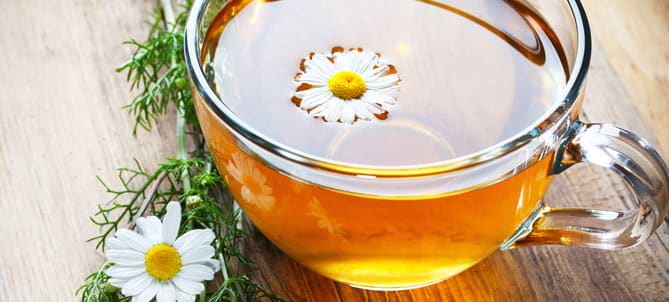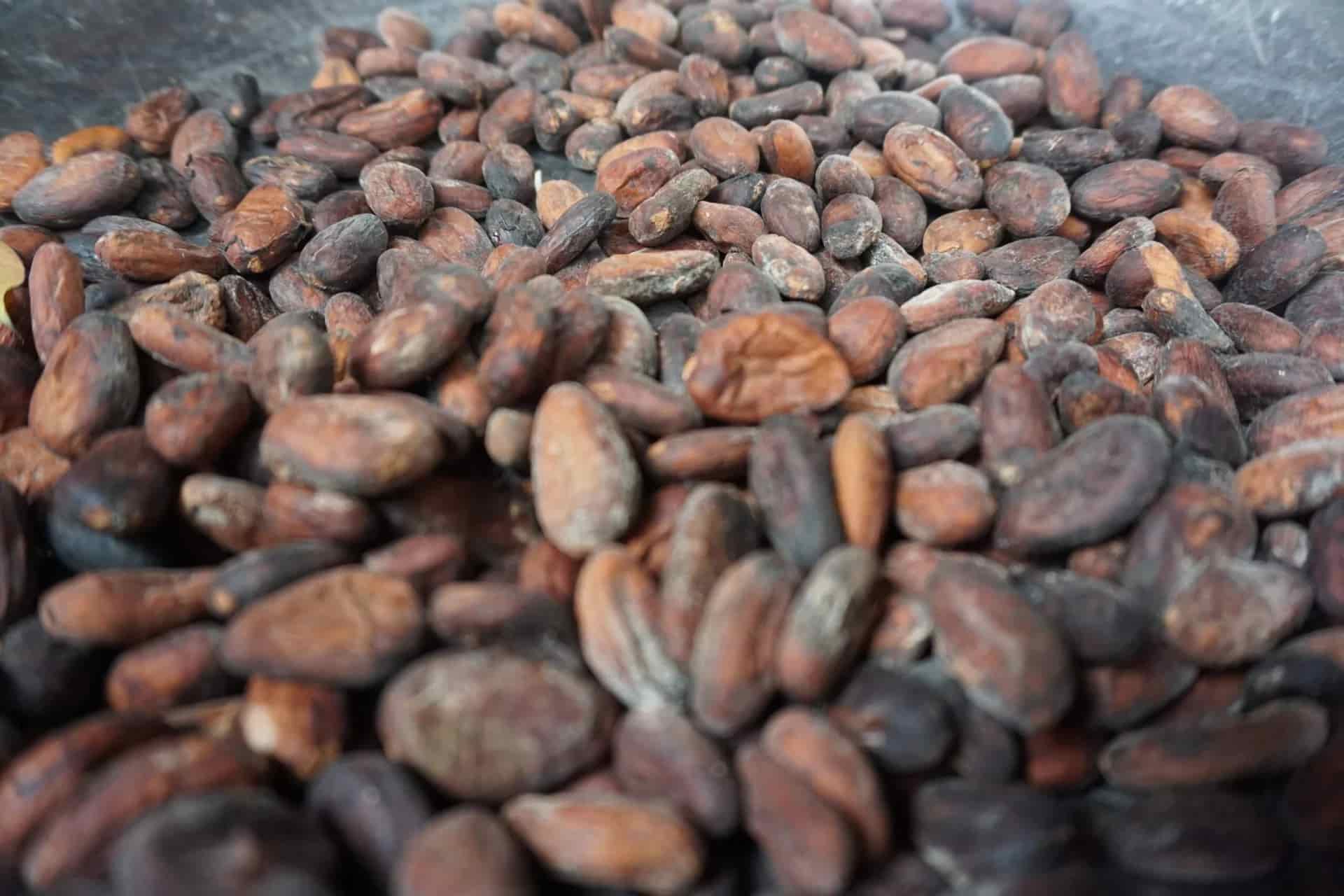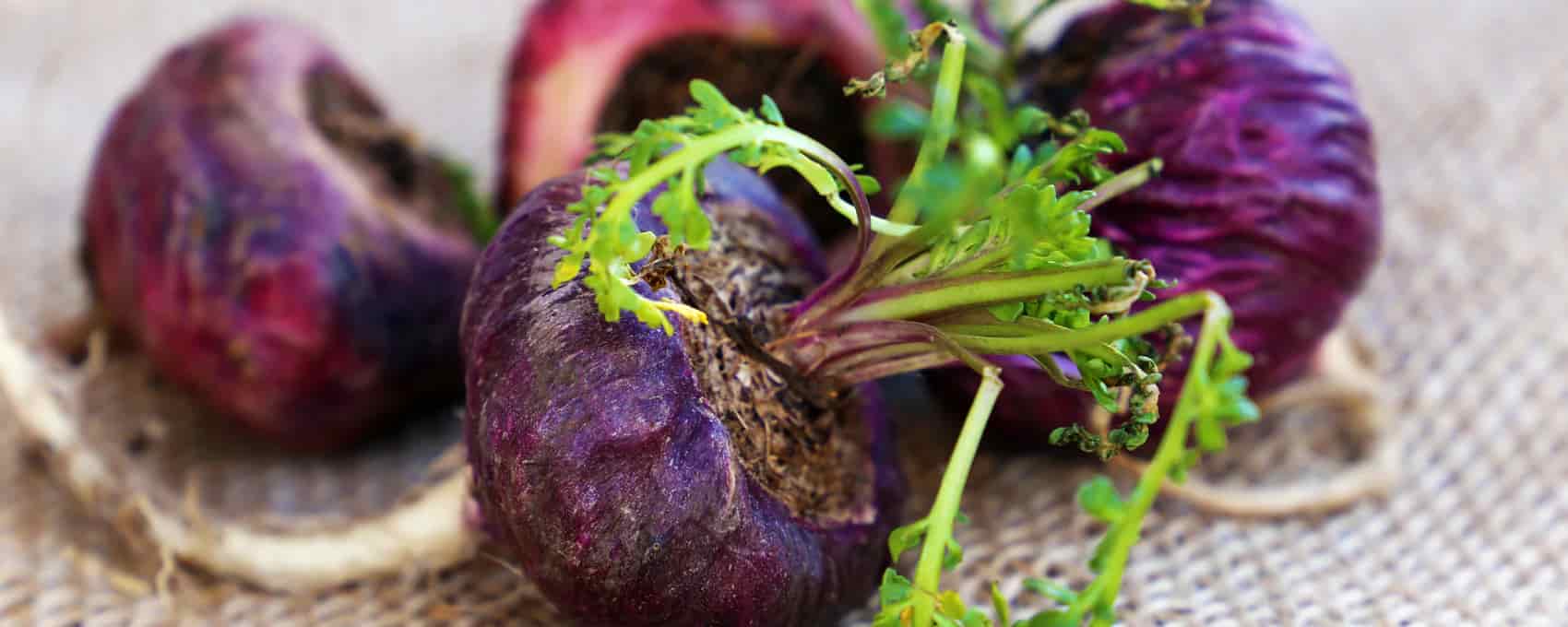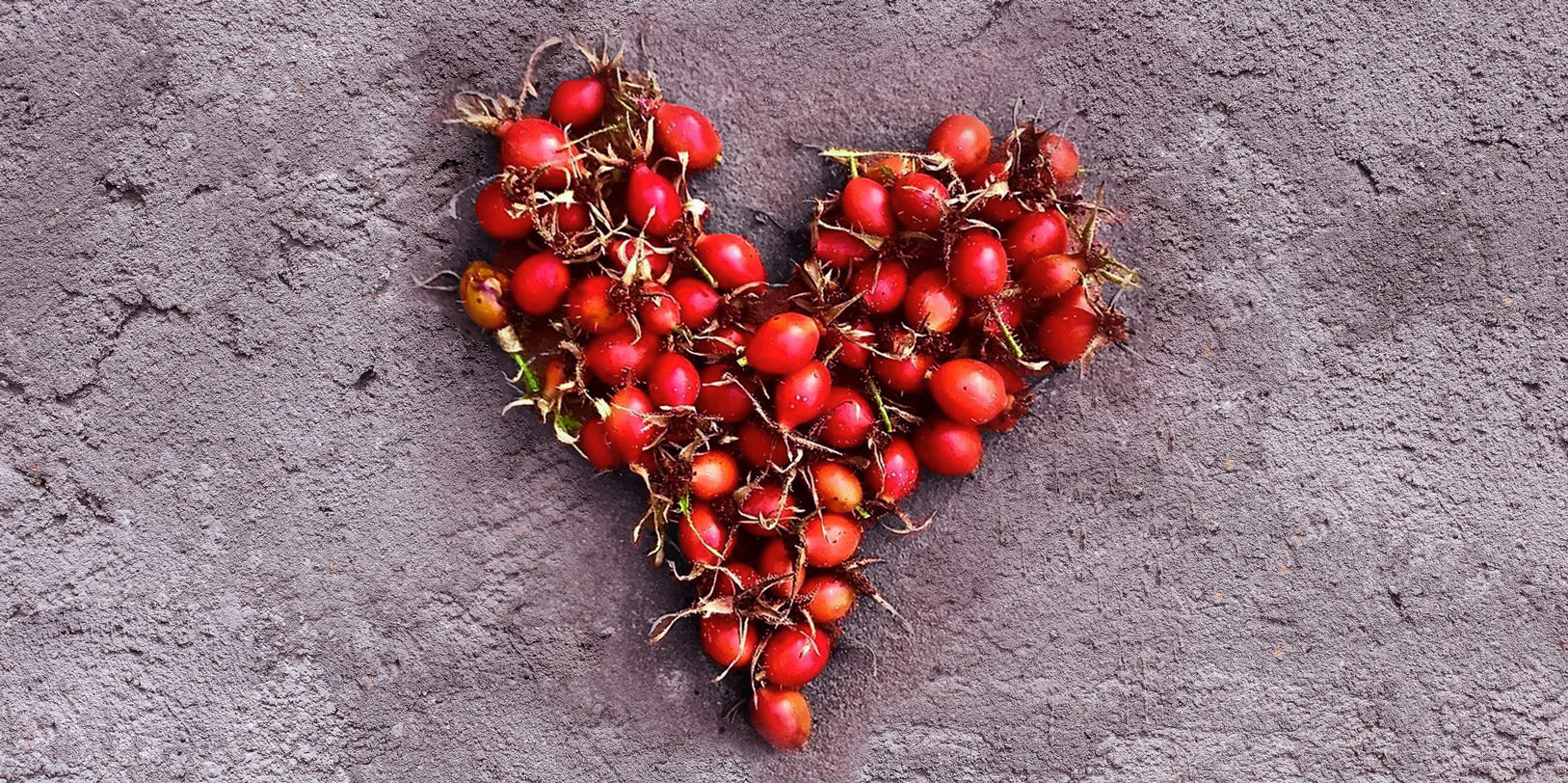Have you ever eaten something so delicious—like a perfectly juicy ripe peach—and wondered who was the first person in history to taste and experience this simple yet satisfying pleasure of being human? I've often wondered about aphrodisiacs; how did we come to discover the powerful and seductive properties of plants? I imagine the first humans who became enlightened to sexy plant substances spent many evenings snuggled up together, sipping damiana tea, snacking on raw Cacao, and basking in the loving feelings.
Whether you're a wellness enthusiast eager to deepen your herbal knowledge, a couple looking to ignite passion, or a practitioner seeking to integrate these herbs into your practice, let's dive into the history, science, and practical uses of nature's original ‘love potions’.
The Ancient Allure of Herbal Aphrodisiacs
Held as sacred secrets by ancient cultures and celebrated for their ability to enhance the human experience, herbal aphrodisiacs have had every corner of the world lust after them. From the ceremonies of the Maya and Aztecs to the romantic traditions of the European courts, these herbs were treasured for more than just physical desire and sexual arousal – they were seen as powerful tools for overall vitality and emotional connection.
Even during the early colonial era, communities passed along herbal knowledge, introducing these exotic plants to new regions where their benefits were shared and celebrated. By the early twentieth century, the use of these herbs for reproductive health, sexual vigor, and even emotional balance became more scientifically understood. Today, as we rediscover medicinal plants and their benefits, modern research continues to affirm their potency and place in wellness traditions.
But how do these herbs work? Beyond their seductive appearances and fragrant aromas, herbal aphrodisiacs interact with the body in fascinating ways – they support healthy hormonal balance, calm the nervous system, improve circulation, nourish the heart, and even uplift the mood, the perfect combination for kindling desire and sparking intimate connection.
7 Must-Try Herbal Aphrodisiacs for the Modern Lover
While there are dozens of herbs celebrated for their aphrodisiac properties, some stand out for their versatility, unique benefits, and rich history. Here are seven of the most beloved love herbs:
1. Damiana (Turnera diffusa)
Native to Central America, damiana is a small shrub with a big reputation. Historically used in spiritual ceremonies by the Maya and Aztecs, this herb has been prized for its ability to lift the spirits, relax the mind, and ignite passion.
Damiana is especially effective for those who feel ‘stuck in their heads’ or disconnected from their physical desires. It nurtures the nervous system while promoting a healthy libido and enhancing healthy sexual desire and sexual activity itself, making it a favorite for couples seeking to rediscover intimacy.
How to use it:
-
Enjoy a soothing tea by steeping dried damiana leaves in hot water.
-
Add powdered damiana to homemade Valentine’s treats like chocolates or cookies.
-
Explore damiana liqueur, a traditional Mexican specialty, or infuse its essence into cocktails for an enchanting twist.
-
Add damiana tincture to mocktails or cocktails to spice up your drinks.
2. Maca (Lepidium meyenii)
A root vegetable from the high Andes of Peru, maca has been used for centuries to boost hormonal balance, energy levels, and fertility. This adaptogenic herb enhances vitality and stamina in both genders, making it a powerful ally for those looking for natural substances to boost sexual desire and revitalize their love life.
Modern research confirms maca’s role in supporting reproductive health by balancing sex hormones and improving mood. Its mildly sweet flavor makes it a versatile ingredient for any romantic spread.
How to use it:
-
Blend maca powder into smoothies or hot cocoa.
-
Sprinkle it into energy balls, protein bars, or baked goods.
-
Combine maca with spices like cinnamon for a flavorful “golden latte” with a sensual twist.
-
Try a maca tincture for quick absorption.
3. Saw Palmetto (Serenoa repens)
A revered herb for men’s health, saw palmetto is known for its role in supporting hormonal balance and prostate health. Traditionally used by Indigenous peoples of the Southeastern U.S., this small but mighty berry helps maintain healthy testosterone levels, promoting vitality and reproductive wellness.
Saw palmetto is also valued for its ability to support optimal urinary function, making it a go-to herb for overall wellness as we age.
How to use it:
-
Take saw palmetto supplements to support reproductive and prostate health.
-
Brew a tea using dried saw palmetto berries for a nourishing daily tonic.
-
Combine saw palmetto with other adaptogens for balanced hormonal support.
4. Horny Goat Weed (Epimedium spp.)
With a name like this, it’s no surprise that horny goat weed has a long-standing reputation as an aphrodisiac. Used in traditional Chinese medicine for centuries, this herb supports blood flow, libido, and stamina. It’s believed to work by promoting nitric oxide levels, which enhance circulation and sexual function.
Beyond romance, horny goat weed also supports energy, endurance, and overall vitality, making it a popular herb for active lifestyles.
How to use it:
-
Try horny goat weed capsules or tinctures for a convenient libido boost.
-
Brew horny goat weed tea for an energizing and warming herbal tonic.
-
Pair with adaptogens like maca or ashwagandha for enhanced stamina and balance.
5. Cacao (Theobroma cacao)
Cacao, the mother of all chocolate, has long been celebrated as ‘the food of the gods’. Its rich supply of theobromine, magnesium, and free radical scavengers supports healthy blood flow, uplifts the mood, and relaxes the body.
Perfect for romantic occasions, cacao’s luxurious taste adds an element of fun and indulgence to any shared experience. Plus, science backs its feel-good effect, contributing to enhanced sexual satisfaction.
How to use it:
-
Mix raw cacao powder into desserts, smoothies, or non-dairy milk for a decadent beverage.
-
Add raw cacao nibs to ice cream or yogurt for a delightful crunch.
-
Create a DIY body butter or massage oil infused with cacao for added flair.
6. Passionflower (Passiflora incarnata)
Known for its calming properties, passionflower is the ultimate herb for soothing stress and creating a sense of relaxation – perfect for setting a romantic mood. This soothing herb helps quiet an overactive mind, allowing you to fully connect with your partner and your desires. By supporting the nervous system, passionflower can improve sexual function and encourage emotional intimacy and a deeper bond, which is beneficial for women's sexual health.
How to use it:
-
Brew passionflower tea before a quiet, cozy evening together.
-
Combine it with other herbs like chamomile for a calming blend.
-
Use passionflower tinctures for higher potency.
7. Hawthorn Berries (Crataegus spp.)
Hawthorn berries are renowned for their connection to the heart, both physically and emotionally. Traditionally used to increase blood flow and support cardiovascular health, they have a long-standing reputation as a symbol of love and romance. Hawthorn helps improve circulation, which can enhance physical intimacy while also fostering emotional connection and harmony.
How to use it:
-
Make a sweet and tart hawthorn berry syrup to drizzle over desserts or beverages.
-
Brew the berries into a tea for a heart-nurturing drink.
-
Infuse the berries in vinegar for a tangy salad dressing or tonic.
Integrating Aphrodisiac Herbs into Your Routine

Exploring herbal aphrodisiacs doesn’t need to be limited to special occasions. These plants can enhance moments of connection all year long. To experience their full benefits:
-
Practice Rituals Together: Brew a pot of damiana herbal tea with honey and vanilla for sweet touch to your senses, savor a maca smoothie every morning for breakfast to get your blood flowing, or add cacao into a shared dessert recipe and enjoy the act of creation as much as the end result.
-
Pair Herbs for Synergy: Combine multiple aphrodisiac herbs to amplify their effects. WishGarden's Liquid Bliss contains many of the herbs mentioned above in one bottle, while Male Mojo is crafted with maca and saw palmetto to support men’s vitality and stamina. Whether you're looking to set the mood or boost your energy, these herbal formulas have you covered. Add them to cocktails and mocktails or take them on their own—either way, they’re here to spice up the night.
-
Experiment with Fun Recipes: There are many ways to integrate herbs into your nights in a pleasant and tasty way. Steeping damiana leaves and hawthorn berries in hot water and adding some honey or Rose-infused syrup makes a delicious and dreamy sipping tea. Raw cacao nibs or hawthorn berry syrup can be added to ice cream and other desserts to add more texture and taste.
-
Create Lasting Traditions: Use these herbs as a way to mark special dates, fostering emotional intimacy alongside physical pleasure. Incorporating herbs in times of connection can really aid in the ease and flow of your exchanges and can make your Valentine's Day one for the books.
Nourish Love Naturally to Enhance Sexual Pleasure
Natural aphrodisiacs offer a holistic way to nurture connections within yourself and with others. The history, beauty, and healing properties of these plants remind us that love is as much about giving as it is about receiving. By integrating these herbs into your lifestyle, you will turn everyday moments into extraordinary ones.
-
Experiment with Fun Recipes: There are many ways to integrate herbs into your nights in a pleasant and tasty way. Steeping damiana leaves and hawthorn berries in hot water and adding some honey or Rose-infused syrup makes a delicious and dreamy sipping tea. Raw cacao nibs can be added to ice cream and other desserts to add more texture and taste.
-
Create Lasting Traditions: Use these herbs as a way to mark special dates, fostering emotional intimacy alongside physical pleasure. Incorporating herbs in times of connection can really aid in the ease and flow of your exchanges and can make your Valentine's Day one for the books.
Tap into the deep-rooted connection between nature and passion by exploring the rituals and stories behind these herbs. Understanding their history and symbolic meanings can enrich your experience, creating a harmonious blend of intention, tradition, and sensory indulgence.
Nourish Love Naturally to Enhance Sexual Pleasure
Natural aphrodisiacs offer a holistic way to nurture connections within yourself and with others. The history, beauty, and healing properties of these plants remind us that love is as much about giving as it is about receiving. By integrating these herbs into your lifestyle, you will turn everyday moments into extraordinary ones.
Feeling inspired? Explore how these sensual herbs fit into your own wellness practices, and enjoy the transformation they bring. After all, creating moments of shared joy, authenticity, and great sex is the greatest gift of all.
Rebecca Younger is passionate about herbs and women's health. She aspires to plant seeds of inspiration within her community about plant medicine and healthier ways of life. She studied Herbal Medicine at Herbalism Roots in Denver and is a certified Doula through the Matrona Foundation. She is the Brand Communications Specialist at WishGarden Herbs.
For educational purposes only. This information has not been evaluated by the Food and Drug Administration. This information is not intended to diagnose, treat, cure, or prevent any disease, or to sell any product.
Recommended Products
Further Reading











